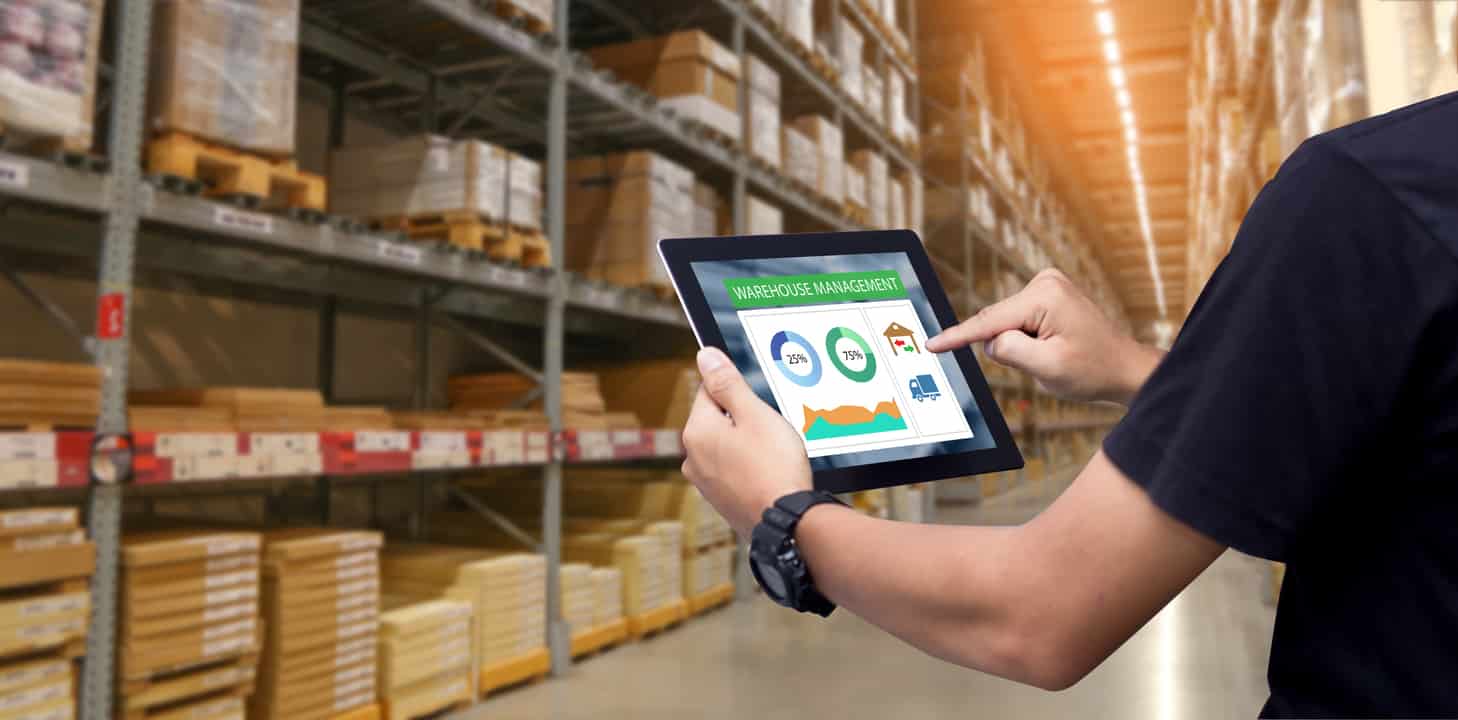Recommerce & Sustainable Returns | 7 Buyback Programs

Thrift stores and consignment shops are stalwarts of the modern shopping experience, providing consumers with options to buy used apparel and goods at a discounted price. That lower price point has been the magnet for drawing in store shoppers, as well as to sites like eBay or craigslist.
What is Recommerce and How does it Work?
Recommerce is simply the selling of previously owned products through a store or eCommerce site. Today, there’s a growing interest in second-hand goods and recommerce. Research firm Cowen predicts recommerce will account for about 14% of the apparel, footwear and accessories market by 2024, up from about 7% in 2020.
But there’s another reason why, besides cost, consumers are more interested in second-hand options.
Concerns about sustainability and supply chain slow-downs have made many new products scarcer, pushing the benefits of recommerce into the spotlight.
Types of Recommerce
There are informal recommerce scenarios, like the garage sale down the street, and formal ones like a marketplace website or consignment shop. Recommerce items are typically apparel, jewelry, books and electronic devices. The recommerce market also includes individuals or companies that purchase second-hand goods, repair them and resell or reuse them. “Resale” or “reverse commerce” are terms used interchangeably with “recommerce.”
Thrift or vintage resale
Thrift stores – think Goodwill – accept donated items and resell them in their stores or online. The individual making the donation isn’t compensated, but may receive a tax benefit. The items in thrift stores are wide-ranging, from the latest fashion to household goods and knickknacks.
Vintage resellers, on the other hand, sell clothing and accessories from a specific time period – usually at least 20 years ago. Some vintage resellers are brick-and-mortar stores with no eCommerce presence, while others offer a more modern, omni-channel experience.
Luxury resale
The luxury resale market is the buying and selling of pre-owned luxury goods. These high quality, expensive items are sold online or in stores, and become more affordable to a greater number of people as resold items. McKinsey notes that luxury resale is being driven by younger buyers who are much more willing to purchase pre-owned products than order generations.
Upcycling
Upcycling means to reuse a product in a way that increases its value, or to create something new from discarded materials. An example would be the purchase of an old table that the buyer repaints or stains, giving it a new life.
Fashion’s Carbon Footprint
As previously mentioned, the growing consumer interest in recommerce is significantly driven by sustainability concerns – and fashion’s carbon footprint tops the list. The United Nations Environment Programme and the Ellen MacArthur Foundation gathered this data:
- The fashion industry uses enough water annually to meet the consumption needs of five million people.
- Around 20% of the world’s wastewater comes from fabric dyeing and treatment.
- The fashion industry is responsible for a whopping 10% of annual global carbon emissions, more than all international flights and maritime shipping combined.
These staggering statistics apply to an item’s creation. But the environmental costs of returns are also significant. According to Style.me:
- Transporting returned clothing items results in about 4.7 million metric tons of CO2 emissions each year. That’s ten times the amount generated by 57,000 U.S. homes.
- Fewer than half of the clothing items returned to a store are ever resold. Many end up in a landfill.
Image credit: Chargebacks911
How Brands Benefit from Recommerce
Following the lead of their shoppers, brands’ attitudes to recommerce are shifting fast. High-end brands that used to shun recommerce (often throwing out returned products to protect their brand equity rather than resell them at a discount), are now proudly selling gently used items.
The increased spotlight on the fashion’s huge carbon footprint, along with returns technology’s ability to make recommerce easier than ever, is driving this change.
+50% of brands reported that consumers are driving the focus on sustainability issues in the fashion and textile industry.
The Economist Intelligence Unit
Here are a few other reasons why brands are rethinking recommerce.
Recommerce gives customers what they want
The forecasted figures for apparel’s recommerce and resale opportunities are too big for brands to ignore. Gen Zers and millennials are conscientious consumers who support brands that support their values. A 2019 survey found that 62% of respondents from these generations prefer to buy from sustainable brands. Some buy almost exclusively secondhand apparel and shoes, as it allows them to get high quality brands at a more affordable price.
Support sustainability goals
A brand can’t claim to care about the environment and then contribute to “the equivalent of one garbage truck full of clothes burned or dumped in a landfill every second” – a statistic from the Ellen Macarthur Foundation. To support sustainability goals, brands must address how they gather, transport, and process returns.
Expand the reach to new customers
Recommerce introduces a brand to new eco-conscious consumers and/or those who weren’t likely to buy an item at full price. As Stella McCartney told Vogue in 2019: “There’s $500 billion worth of waste in the fashion industry every year, and that, to me, is a business opportunity.”

Give returned or overstocked items another chance
Seasonality and trends influence when and whether items sell. A brand can give an item a second life with recommerce, allowing shoppers in different climates or different geographies to purchase used or returned items.
What Brands Offer Buyback Programs?
For forward-thinking brands, a buyback or resell program is an important component of a sustainable returns strategy and shaping a circular economy – one that reuses, recycles or repairs items whenever possible. It’s also a great benefit for customers, allowing them to sell back items for credit.
2/3 of consumer product execs believe a sustainable supply chain is a competitive differentiator.
SAP
Outerknown offers a program called “Outerworn” that invites customers to sell back used items through an online marketplace. The stated goal is to keep their products “out of the landfill and in circulation – forever.”
Patagonia has long been at the forefront of activist environmental issues, and began its own sustainable returns program in 2017. In 2019 it launched the program “ReCrafted,” which makes and sells clothing from scraps of used Patagonia gear.
Ikea’s “Buy Back & Resell” offer proves that recommerce isn’t just for fashion. Furniture in good condition can be brought into a participating store for inspection and resale.
Eileen Fisher pointedly proclaims “Just say no to new clothes.” Its buyback program of unwanted clothes claims to have resold, remade or donated 1.5 million pieces since 2009.
REI Good and Used program states that buying used typically avoids carbon emissions of 50% or more. Its program for clothing and outdoor items further extends a product’s life while serving customers who want pre-owned and lower cost items.
Nike Refurbished takes back eligible shoes, refurbishes them by hand, and resells them at select stores.
What is lululemon Resale Program?
lululemon’s “Like New” is a resale program that aims to shrink the company’s carbon footprint. Consumers can trade in gently used clothing for store credit, and the company states it will reinvest its Like New profits into sustainability initiatives.
How do lululemon Trade-ins Work?
Customers must bring in their worn gear to a local lululemon store for inspection and processing. There are set credit amounts for clothing categories, such as a $5 credit for shirts and shorts and a $25 credit for accepted outwear. The item is then cleaned and sold online.
What is lululemon’s Impact Agenda?
lululemon’s Impact Agenda summarizes the company’s social and environmental commitments. Its three pillars are “Be Human,” “Be Well” and “Be Planet” – along with specific goals underneath each pillar. Some examples include receiving Fair Labor Association accreditation by 2024 and achieving at least 75% sustainable materials for its products by 2025.
How Can A Return Management System Help?
Sustainability and recommerce programs are built on the premise that customers will return new or gently used items. Once those items are received, the real work begins: They must be inspected, repaired, cleaned, and dispositioned according to strict rules that protect the brand’s reputation and align with its sustainability goals.
A returns management system (RMS) is essential for returns management as well as minimizing the cost and environmental impacts of a recommerce program. The ability to automate returns operations opens up new efficiencies and increases productivity, so brands can do right by customers and by the planet.
Here at ReverseLogix, our RMS enables global brands to offer:
- A fully branded, intuitive returns portal for customer returns
- Instant crediting
- Robust rules and policy engine to enforce policies, claim rules and approval hierarchies
- Guided workflows for receiving, inspecting and grading returns

A returns management system’s data analytics improves the sustainability of returns—and even helps avoid them in the first place. An RMS integrates into a tech stack and delivers rich business intelligence, giving brands end-to-end visibility and functionality to facilitate, manage and report on the entire returns lifecycle. This ultimately helps brands answer critical key questions about their returns operations:
- How do return processes reflect corporate sustainability goals?
- How can those processes be measured, and the results tracked?
- How can the right business intelligence drive sustainability efforts?
- Can some product returns be avoided or minimized?
An RMS also orchestrates activities around vendor programs, such as ensuring consistent product quality and customer satisfaction by increasing tracking visibility. It’s especially important if a brand has a return-to-vendor (RTV) program, which can be costly if not executed well. Read more about leveraging RMS technology to make an RTV program run smoothly.
An effective repairs program is an important pillar of any returns management strategy. With returns management technology, brands can maximize the value of a return by easily managing parts replacement, warranty-based repairs, testing integrations and more. A consistent, cost-effective returns process will increase the value of returned inventory in secondary markets, while protecting a brand’s reputation and quality.
